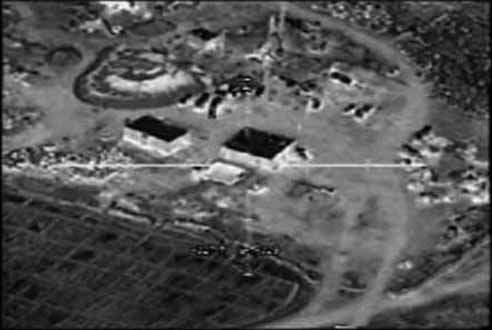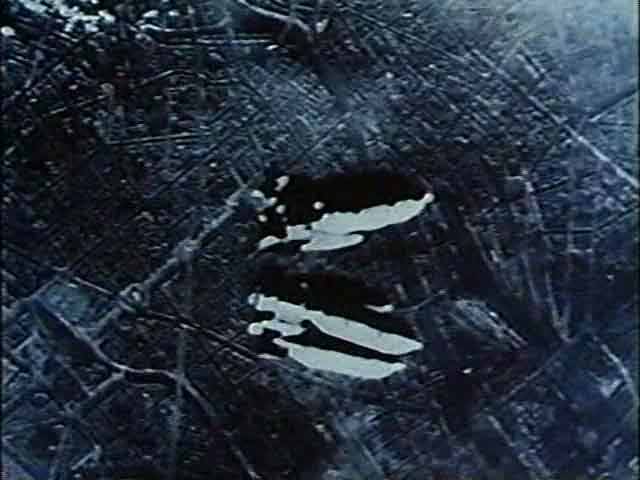
“For men at war, the function of the weapon is the function of the eye”
Paul Virilio
I’m currently reading a fairly interesting book entitled Witness, Memory, Representation and the Media in Question ( ed. Ulrik Ekman and Frederik Tygstrup, Copenhagen: Museum Tusculanum Press, 2008), based on the proceedings of a symposium held at the European Summer School in Cultural Studies, Copenhagen, August 25, 2004. One of the most striking essays is the one written by Mikkel Bruun Zangenberg, ‘Witnessing at War’. In it he comes up with the term ‘the belligerent gaze’ as “an umbrella-expression designating a diversity of perhaps internally heteregoneous modes of looking in and at warfare”. He focusses on two distinct events, World War I and the incidents in the Abu Ghraib prison, in order to explore the changes in modes and conditions of “witnessing”, referring to the writings of Erich Maria Remarque, Ernst Jünger, Primo Levi, and others. All these authors seem to agree on the “peculiarly aporetic nature of witnessing and trauma: be it in the form of blindness and insight, of a non-coincidence between fact and truth, of the detrimenal and coercive contamination of all on the inside as well as the outside, or of the bleak curse and guilt of the inauthentic survivor.” What is rejected is the ’emperical’ notion of the witness as someone who ‘saw it with his of her own eyes’. Zangenberg’s claim is that the condition of witnessing is evaded and destroyed, circumvented or paralysed. In WWI soldiers were ‘derealized’, turned into some form of ghost – or else, appearing as pilots (see Virilio’s War and Cinema: The Logistics of Perception), in which case their sight is reduced to an exclusively streategic and destructive gaze – they see victims, but never witnesses their obliteration. 90 years later, in the Abu Ghraib case, the conditions of witnessing are perverted and caricatured by the degrading videos of humiliated prisoners. Or the deceased civilians are not seen at all, they literally become invisible (see Judith Butler’s Precarious Life: The Powers of Mourning and Violence).
Zangenberg considers the erosion of these modes and conditions, leading to “the obliteration of witnessing”, in part due to the contemporary role played by media and the proliferation of digital imagery. He refers to the ideas of Virilio, who writes about the dehumanizing, automated appearance of surveillance and seeing in the 20th century warfare and proposes that the emergence of unmanned planes and missiles (“intelligent weapons”) inaugurated the virtual dissapearance of witnessing. In War and Cinema Virilio quotes W.J. Perry, a former US Under-secretary of State for Defense, as saying “once you can see the target, you can expect to destroy it”. Virilio adds: “For men at war, the function of the weapon is the function of the eye””. “Obviously”, Zannenberg writes, “this circumstance is intensified when there is only a machinic eye casting a belligerent, neutral and automated glance at an infrared shape representing a human body” (see Manuel de Landa’s War in the Age of Intelligent Machines). The new kind of automated images have suggested a new surgical precision of warfare. War is the subject of these images, but it is also a means of creating subjects, visual subjects. In the Gulf War strategy, the agency belongs to the “West” seen from the point of view of the weapons themselves. Pictures were transmitted showing their “view” of their targets right up until the moment of impact (see Nicholas Mirzoeff’ Watching Babylon: The War in Iraq and Global Visual Culture). In these shots – according to a theory put forward by the philosopher Klaus Theweleit- bomb and reporter are identical.
For example, these images were taken in 2002, when about 2.000 troops from the US led military coalition were engaged in close in combat with small pockets of suspected al Qaeda and Taliban fighters in the rugged terrain of northeastern Afghanistan, as part of an operation called Operation Acaconda…. This footage was filmed from US gunship helicopters that were part of this mission. At the same time these pictures show the distance between the pilot and the battlefield. (Found in OVNI’s Babylon Archives. Fragments of these shots were appropriated by Dominic Angerame – in Anaconda Targets – and Christoph Büchel – in AC-130 Gunship Targeting Video (Afghanistan 12/6/2002)).
The images below were recorded during NATO air strikes against former Yugoslavia. There were 4 US AIR Force airplanes flying from a NATO-base in Italy to a destination in Yugoslavia. Mission objective was to bomb several targets in the area around the city of Novi Sad. On the way back, after the mission was completed, one of the planes was shot. This tape was found near the crashed plane in the Fruska Gora mountains in the Srem region. It shows the electronic cockpit with basic graphical interface and voice communication between the pilots. This videotape is a regular flight document used by command structures to analyze its efficiency and success after very mission. It presents the last moments before the plane crashed. The blue image signifies the end for the pilot: no image, no place, no reality. (Found on Kuda.org)
The loss of the ‘genuine picture’ means the eye no longer has a role as historical witness. It has been said that what was brought into play in the Gulf War was not new weaponry but rather a new policy on images. In this way the basis for electronic warfare was created. Today, kilo tonnage and penetration are less important than the so-called C3I cycle, which has come to encircle our world. C3I refers to “Command, Control, Communications and Intelligence” and means global and tactical early warning systems, area surveillance through seismic, acoustic and radar sensors, radio direction sounding, monitoring opponents’ communications, as well as the use of jamming to suppress all these techniques.
Harun Farocki explores these issues in many of his films and installations. In War at a Distance (2003) he focusses on how, since the first Gulf War, it has virtually impossible to distinguish between real pictures and those generated on a computer. The image is no longer used only as testimony, but also as an indispensable link in a process of production and destruction. In Bilder der Welt und Inschrift des Krieges (1989) he researches the interconnection – and at times, disjunction – between cognition and recognition in Images of the World and the Inscription of War. The film is based on an event which took place in 1944, when an Allied aircraft took topographic photographs of Auschwitz during a routine surveillance operation for power plants, munitions factories, chemical plants, and any other industrial complexes that could potentially serve as bombing targets that, in the military’s myopic search for these high collateral targets that would cripple the German war machine, failed to recognize that they had actually taken an aerial survey of the layout of the Auschwitz concentration camp – an explicitly detailed, but mentally unregistered discovery for which the implicit meaning would not be realized until decades later, long after the tragic reality of the Nazi death camps had been exposed. Investigates this conceptual image of a “blind spot” and the binding of the gaze, the film illustrates the conceptual introduction of quantifying images measured from a “safe” distance into discrete elements that can be uniquely identified or accurately reproduced remotely into scale models and detailed simulations. Christa Blümlinger wrote about the film: “one’s thoughts are not free when machines, in league with science and the military, dictate what is to be investigated. This is the essence of media violence, of Paul Virilio’s ‘terrorist aesthetic’ of optic stimulation, which today appears on control panels as well as on television, with its goal of making the observer either an accomplice or a potential victim, as in times of war”.

For Zangenberg this concerns the duress of being the subject of the belligerent gaze. He writes: “I contend that the one who cast the belligerent gaze, the one who is the subject and master of that gaze, is barred from ever becoming a witness; he may well ‘see everything’, but since he is always at a safe distance, and since he is the one who produces death, he cannot properly turn into a witness. Being the object of the belligerent gaze, on the other hand, is a position of passivity, vulnerability, fear, horror, and suffering, if not being exposed to the numbing effect of alienation and derealization. Either way, war is engaged in a constant process of un-witnessing.”